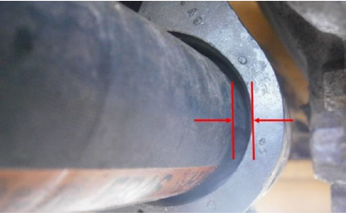Maintenance and modifications causing fire risks in heavy vehicles and mobile plant
The purpose of this Safety Alert is to highlight the increased risk of fires in mobile plant and heavy vehicles when maintenance or modification work does not follow the recommendations of the Original Equipment Manufacturer (OEM).
Background
NT WorkSafe has received a number of notifications this year regarding fires starting on mobile plant on mine sites, or heavy vehicles operating on the road networks. Fires present a potential safety risk to the operator and nearby workers. In some of the incidents, the mobile plant or heavy vehicle has suffered significant damage or been destroyed.
Contributing factors
Investigations into the various incidents have found a number of maintenance or modification related factors contributed to the fires including:
- Maintenance work not incorporating the latest safety updates from the OEM;
- OEM guidelines not followed when fitting additional equipment or accessories, including in some instances, electrical wiring not installed to industry best practice;
- Hydraulic and fuel hoses failing due to:
- Fitting additional hose protection which reduced the service life of the hose;
- Increased wear and tear on incorrectly routed hoses due to chaffing or interference with other components;
- Incorrect alignment of clamps and grommets on hoses;
- Loose or damaged clamps not being identified and changed out;
- Failure to change hoses in line with OEM recommendations; and
- Hoses installed with insufficient length, causing additional stress on the hose, especially to the connection point to the fitting.

Action required
- OEM safety updates should be immediately incorporated into maintenance work, including fitting upgraded parts as they become available in line with OEM recommendations;
- Modifications or the installation of additional equipment are done in-line with OEM guidelines, and to industry best practice;
- Systems should also be in place to identify and manage aftermarket equipment or unapproved modifications to vehicles or machines;
- Review the fitting and routing of all hoses to ensure they are in-line with OEM guidelines;
- Inspect hoses at intervals recommended by the OEM, or in the absence of OEM guideline, as recommended by a competent person.
- Remove any shielding or guards to aid in the inspection.
- The installation Fire Suppression Systems, including the location activation control should be consistent across the fleet.
- Ensure all operators and drivers are aware of the emergency procedures in the case of uncontrolled fires, including how to activate any installed Fire Suppression Systems;
- Operators and drivers where possible, should view the actual deployment of the Fire Suppression System.
Further information
For further information please refer to the following: